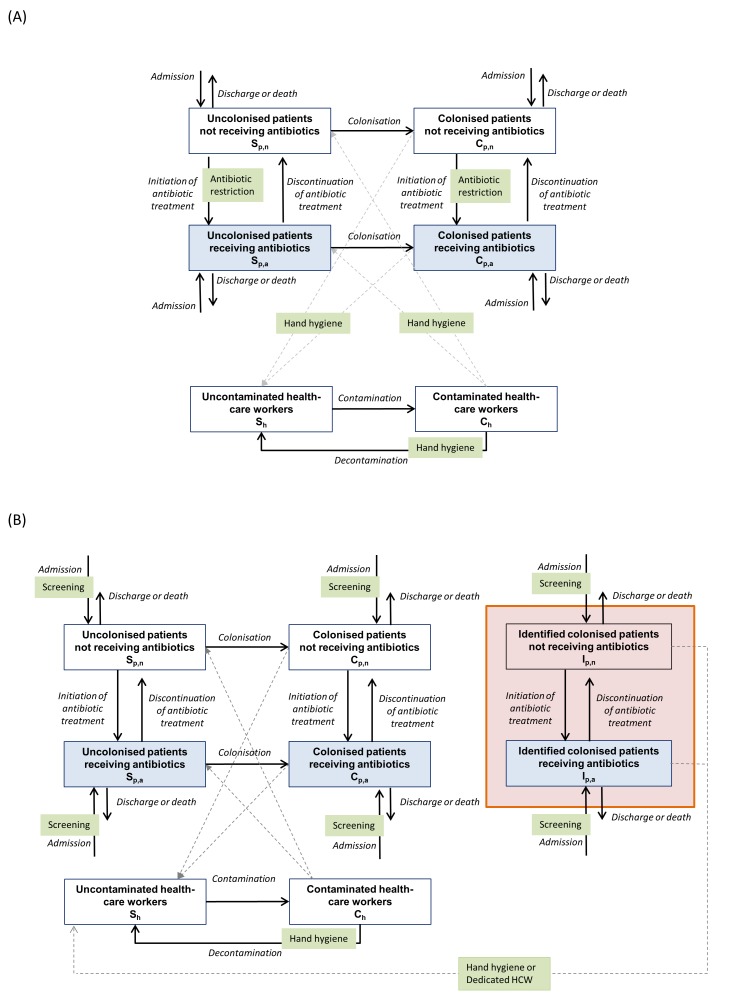Figure 1.
Model of transmission of extended-spectrum beta-lactamase-producing Enterobacteriaceae (ESBL-PE) between patients through contacts with healthcare workers (HCWs) and impact of infection control measures in the transmission process. Solid lines represent the transitions between population groups and dashed lines represent the transmission between patients and HCWs. (A) Impact of universal (horizontal) control measures: (1) hand hygiene (HH) (reduces the transmission among patients and HCWs); (2) antibiotic restriction (reduces the risk of transmission from colonised patients receiving antibiotics to HCWs or from contaminated HCWs to uncolonised patients receiving antibiotics). (B) Impact of targeted (vertical) control measures: screening of patients on intensive care unit admission and identification of patients who had positive screening results (patients surrounded be a shaded box). Implementation of: (1) contact precautions (HH reduces the transmission from identified ESBL-PE carriers to HCWs); (2) cohorting of identified ESBL-PE carriers and attribution of a dedicated HCW (prevents the transmission from cohorted patients to other HCWs and patients). Note that we included two categories of colonised patients: (1) who had false-negative admission screening results and (2) who had positive admission screening results (patients surrounded by a shaded box).

